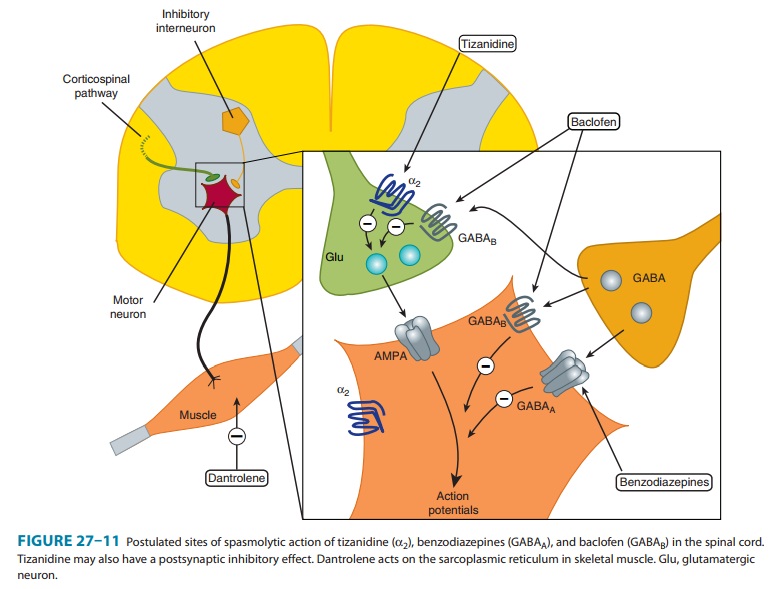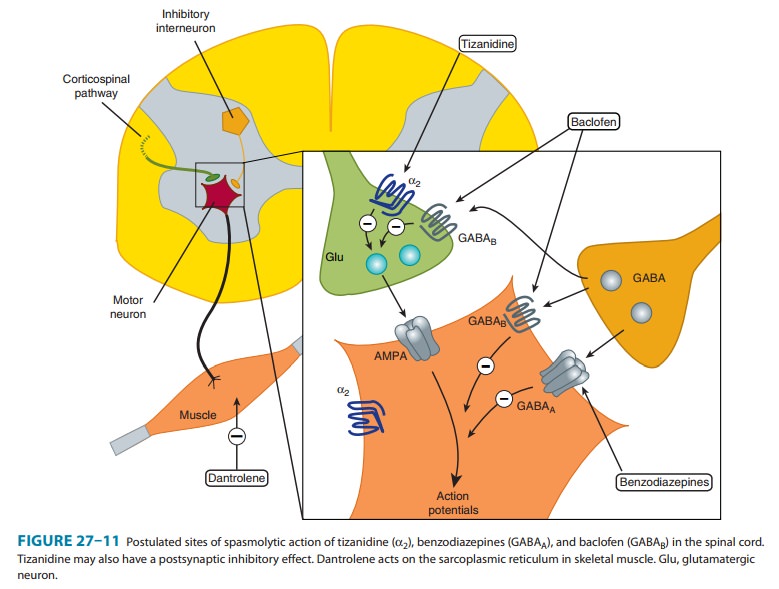Chapter: Basic & Clinical Pharmacology : Skeletal Muscle Relaxants
Spasmolytic Drugs

SPASMOLYTIC
DRUGS
Spasticity
is characterized by an increase in tonic stretch reflexes and flexor muscle
spasms (ie, increased basal muscle tone) together with muscle weakness. It is
often associated with spinal injury, cerebral palsy, multiple sclerosis, and
stroke. These conditions often involve abnormal function of the bowel and
bladder as well as skeletal muscle. The mechanisms underlying clinical
spasticity appear to involve not only the stretch reflex arc itself but also
higher centers in the CNS (ie, upper motor neuron lesion), with damage to
descending pathways in the spinal cord resulting in hyperexcitability of the alpha
motoneurons in the cord. Pharmacologic therapy may ameliorate some of the
symptoms of spasticity by modifying the stretch reflex arc or by interfering
directly with skeletal muscle (ie, excitation-contraction coupling). The
important components involved in these processes are shown in Figure 27–10.

Drugs
that modify this reflex arc may modulate excitatory or inhibitory synapses .
Thus, to reduce the hyperac-tive stretch reflex, it is desirable to reduce the
activity of the Ia fibers that excite the primary motoneuron or to enhance the
activ-ity of the inhibitory internuncial neurons. These structures are shown in
greater detail in Figure 27–11.

A
variety of pharmacologic agents described as depressants of the spinal
“polysynaptic” reflex arc (eg, barbiturates [phenobarbi-tal] and glycerol
ethers [mephenesin]) have been used to treat these conditions of excess
skeletal muscle tone. However, as illus-trated in Figure 27–11, nonspecific
depression of synapses involved in the stretch reflex could reduce the desired
GABAergic inhibitory activity, as well as the excitatory glutamatergic
trans-mission. Currently available drugs can provide significant relief from
painful muscle spasms, but they are less effective in improv-ing meaningful
function (eg, mobility and return to work).
Related Topics